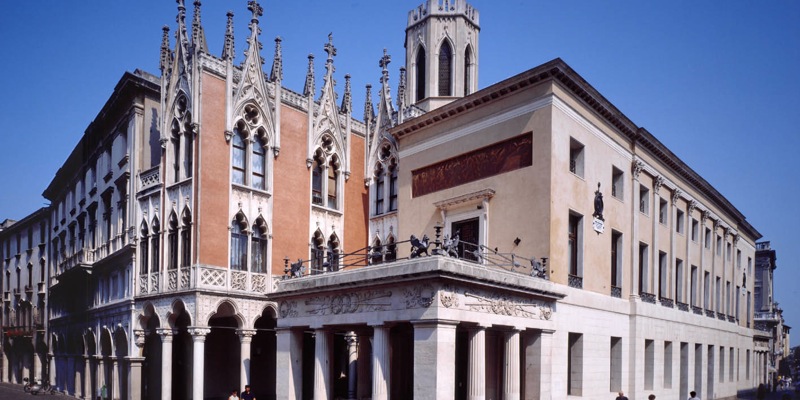The cafe trend spread to Venice during the 18th century and from the lagoon city it arrived to Padua, where in the mid-century already existed many cafes. In one of these, served Francesco Pedrocchi from Bergamo (1719-1799), who in 1772 started a new shop of his own in the area where today's Café is located.
The business was an immediate success and was continued by his son Antonio (1776-1852), who acquired a few contiguous buildings with the idea of building a big café, inspired by Austrian workshops.
The shop, whose design had been developed by Pedrocchi and architect Giuseppe Jappelli, was opened in 1831; it was so beautiful that it gained fame even abroad. It was called the «café with no doors» because it never closed, not even at night: a custom that continued until the distresses of the Great War of 1915-18, by which they were forced to close at sunset. Many illustrious characters, including professors and students from the nearby University, frequented it: worth a mention are at least Nievo and Stendhal.
On February 8th, 1848, the homicide of a student in the white room, started off the European revolutionary movements. In his will, Domenico Cappellato Pedrocchi (1824-1891), adoptive son of Antonio, devised the café to the municipality of Padua, with the constraint of keeping up the building so that it «could maintain the primacy in Italy».
Today, the Pedrocchi continues the tradition by proposing historic recipes to Paduans and tourists, like the homonymous café, prepared with mint, or the Stendhal zabaglione based on a secret recipe.
Its halls, which today also host a restaurant, are the elegant point of reference for public presentations, meetings and banquets.
However, the Pedrocchi can be considered an authentic theatre of taste; divided on two levels and elegantly furnished, it is a perfect setting for all kinds of reception, from cultural or musical events, to banquets or business meetings, weddings, graduations, all with a common thread: high quality and unparalleled welcome.
Caffè Pedrocchi was established between 1826 and 1831 by the Venetian architect Giuseppe Jappelli, which incorporated a number of existing buildings. The structure develops on three sides, two of which are on opposite squares while the third is along via VIII Febbraio.
Seen from above, the complex has the shape of a grand piano, whose keyboard opens to embrace Piazzetta Pedrocchi by two foreparts of Doric loggias, guarded by stone lions (by sculptor Giuseppe Petrelli). A Corinthian loggia characterizes the upper floor. On the opposite side, the café extends by a loggetta towards the City Hall and the university, next to the neo-Gothic style «Pedrocchino», completed in 1838.
The rooms on the ground floor are named after the colour of their upholstery, with original furnishings designed by Jappelli (except the bar, replaced in 1950): the red room, decorated by maps, the white room and the green room. The opening of the upper rooms (outside access) dates back to 1842.
The lounges are inspired by different eras: there is the Etruscan hall; the octagonal Greek hall, frescoed by Giovanni De Min; the great Rossini hall, designed for music and then the Herculaneum, Renaissance, Egyptian, and Roman halls, decorated by Ippolito Caffi, boasting splendid views of Rome. Other rooms house the Civic Museum of Risorgimento and that of Contemporary Age.
Are you a local? What do you think about Caffè Pedrocchi?
Login to suggest it!


